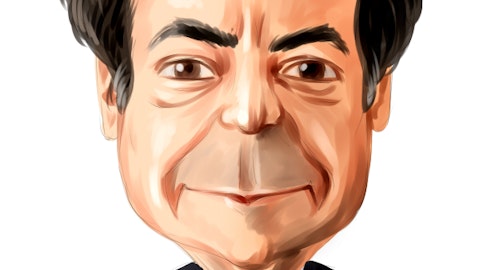It has been a rough year for solar stocks. First Solar (NASDAQ: FSLR) was the worst performing stock in the S&P 500 last year and has lost almost 90% of its value from its 52 week high of 142. Nor was it alone in the solar industry. Suntech Power(STP) is off 70%. JA Solar (JASO) is off 80%. Solyndra, recipient of a $500 million U.S. taxpayer loan, is out of business. Lee Ainslie, D. E. Shaw, and Al Gore’s Generation Investment Management are among the fund managers with First Solar positions at the end of March.
The solar industry is suffering from serious overcapacity, while its best customers, the Europeans, have lost some on their green energy fervor and cut subsidies in the face of their ongoing economic turmoil. Besides which, sunny Germany already has the highest percentage of their energy from solar than any nation in the world. Hopes that the U.S. would come on stream in a big way have been dashed by the collapse in natural gas prices, which have made it harder to compete with gas turbines.
Supporters of solar based energy point to its lack of carbon pollution. The ice on the poles continues to melt and the Earth continues to get warmer. But if the last decade has proved anything, it is that people and nations will ignore climate change until this mother-of-all-externalities becomes an imminent economic catastrophe, as when the Florida coastline starts disappearing. Plus, government subsidies for solar or anything else are not popular in the current budget-challenged environment.
Is there any cause for optimism? For one thing, the continuing drop in the cost of photovoltaic panels also means that the solar is becoming more and more competitive. First Solar’s cost of production of its thin film panels is now about $0.69 per watt. Solar panels have some of the dynamics of semiconductor chips—they get cheaper and more powerful every year. Depending on who does the figuring and where you live, solar is approaching parity with other forms of electricity, as costs continue to decrease while efficiencies increase, as they have for the last 30 years.
Another sign of life comes from Saudi Arabia, of all places. Despite its huge reservoirs of fossil fuels, the kingdom hopes to get a third of its energy from solar over the next two decades. The Middle Eastern oil producers like Saudi Arabia and Kuwait understand that oil is a depreciating asset while the sun will continue to shine in the desert forever.
Two companies in one
Unlike its mostly Chinese competitors, First Solar is really in two businesses. It produces solar panels, but it also has an integrated systems business, whereby it acts as a contractor to build and manage solar plants for utilities.
In its manufacturing business, First Solar uses a cadmium telluride thin film technique to make its panels, which makes them cheaper to produce than silicon panels, so they get more watts per dollar. However, crystalline silicon panels are more efficient—they produced more electricity per unit area. If you have a big solar field on federal land in a Southwestern desert, you don’t care much about unit area. But if you are producing solar power on a rooftop, you need that higher efficiency. Moreover, silicon panel prices keep coming down; if they reach parity, First Solar will no longer have an advantage. Analysts have wrung their hands over this potential problem for years, but I don’t think this is an existential threat. In the long run, both technologies will probably continue to evolve, and, like the semiconductor industry, manufacturers will have to continuously upgrade their processes to stay competitive.
First Solar’s more profitable business going forward, in any case, is its systems business. It has a pipeline consisting of an aggregate 2.7 gigawatts of power. Some of its biggest projects have been in Germany, but the company has substantial business in the U.S.
Motley Fool’s Travis Hoium has argued that First Solar may be worth more if split into two companies. The systems integration business would then be free to use whatever solar panels seem most fitted to the project, instead of being locked into thin film panels.
First Solar—Value Play?
First Solar disappointed analysts with a loss in the latest quarter, but then raised its annual guidance a little. The company expects to earn $4.00 – $4.50 per share this year, after reducing its costs by shutting down a plant in Germany. At its current price, that would give First Solar’s stock a price-to-earnings ratio of only 4. It is selling at about half its annual sales and less than half of its book value. If you believe that solar energy actually has a future, then this would seem to be a very cheap valuation.
Does solar energy have a future? Stephen O’ Rourke, managing director of Deutsche Securities had this to say: “…the declining cost profile of the solar PV industry competes with the rising cost of grid supplied electricity. Although the solar PV industry has yet to establish its own Moore’s Law, the hurdle rate becomes easier each year.”
Solar energy stocks, in general, have a long history of disappointing investors, and First Solar, in particular, has been criticized in the past for its accounting practices. It may take some time for its new CEO James Hughes to win over investors. If you are nimble, maybe you can catch this falling knife before they get wise.
This article is written by Steven Edwards.




